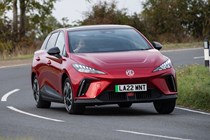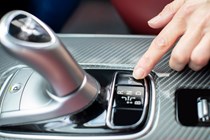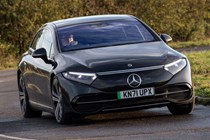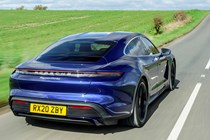If you’re thinking about buying a new electric vehicle (EV), the chances are you’ll be paying especially close attention to driving range. Fortunately, after more than a decade of mainstream electric vehicle sales in the UK, electric car range has improved dramatically.
While the original Nissan Leaf may have started the revolution with a claimed driving range of just 48 miles, the latest electric flagships from the likes of Tesla and Mercedes-Benz can now top 350 miles per charge. Even more modest models – including the current Nissan Leaf – can comfortably travel over 200 miles between plugs.
Depending on your lifestyle, home location, or driving habits, you might find a much cheaper, lower-range option more than sufficient. On this page we’ll cover some of the details of electric car driving range, exploring what can affect driving range, how it’s measured, and what to do if you find yourself stuck.
By exploring the details, you should be able to determine whether you think an electric car is right for you. Many people are put off by EVs over range anxiety: the fear that an electric car won’t have enough battery power to make it to the destination.
In truth, if your car journeys rarely extend much further than shops, even the shortest-range electric cars currently on sale should suffice your needs. If you often cover long distances then you should be looking at EVs with a lot of range to ensure you always get to where you need to be.
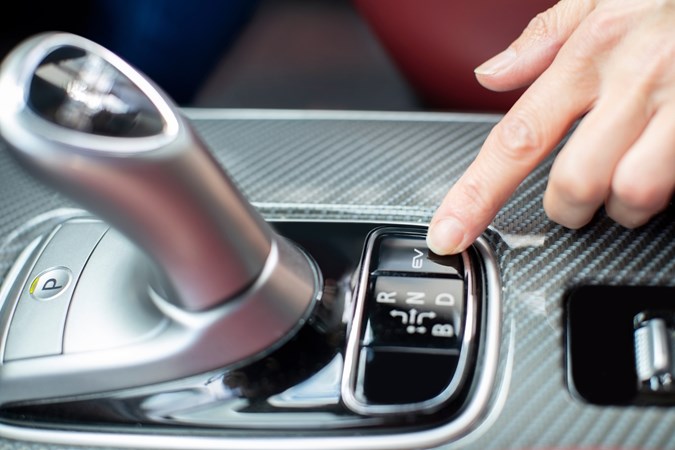
What can impact electric car range?
How and where you drive
Electric car technology has brought the power of regenerative braking to mainstream motoring. By capturing the kinetic energy generated from slowing down, braking or going downhill then redeploying it back to the wheels, electric vehicles can use the stop/start nature of cities and the topography of the countryside to their advantage.
Motorway driving is possible in an EV, and cruising definitely helps slow down the rate of depletion, but driving along a concrete channel for many miles won’t offer much in the way of power conservation.
When it comes to which route to choose, EVs are better suited to shorter slower journeys such as those through the countryside, while a potentially faster yet longer route will only drain the battery further – something to keep in mind if you’re conscious of range left in the tank.
Electric car range can also be heavily influenced by driving style. If you’re prone to violent accelerations while on the road, the range of your EV will pay the price. Higher cruising speeds will drain your battery faster so in the interests of power conservation, practice smooth driving to maximise your range.
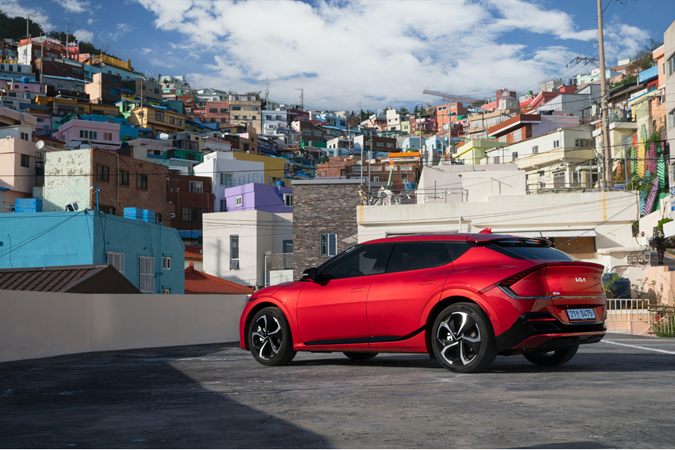
It’s worth noting that some manufacturers may programme their navigation systems to calculate your route via a charging point, even if it’s out of your way, to minimise the risk of going flat on the road. However, venturing ten miles up a motorway for more power will drain more of the battery energy than cutting across country if you could arrive at your destination with just a few miles of charge.
The temperature of the day
In cold weather, you may notice a change in performance from your EV battery. The lower the ambient temperature, the longer an electric car battery will take to charge. If the temperature drops below the battery’s optimum window, the electrochemical operation of the battery will start to slow down, affecting range and charging time.
While driving along in the cold, you’re far more likely to have your car heater on, too. Since the onboard amenities in electric cars are also powered by the main battery, if you’re indulging in extensive heater use, you can expect range to pay the price.
To preserve your range in cold weather, practice smooth driving, avoid heavy braking or acceleration and engage your EV’s eco driving mode where possible. To save power, consider warming the cabin of your car up while it’s still or charge, or laying up to avoid using as much power through the heaters.
If your car can do so, pre heat the battery, too, as you’ll save yourself some diverted power later on, extending range.
How loud you have the audio on
Heaters aren’t the only electrical components that consume battery power. An EVs sound system and other onboard entertainment will also drain battery and miles left on the range.
Audio won’t take much, but if you find yourself a bit short on battery, you might find the car will automatically cut some non-essential functions to ensure you make it to a charge point. Regular top-ups help keep batteries in tip-top condition, so this shouldn’t be a problem.
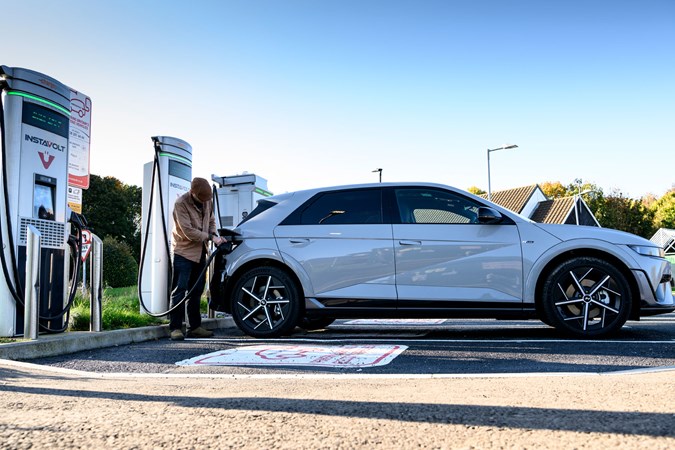
So, how do car makers calculate range accurately?
When calculating range, manufacturers refer to the Worldwide harmonised Light vehicle Test Procedure (WLTP) figures. The car is hooked up to a series of sensors then put through a standardised test to establish maximum range in could achieve. The WLTP runs the car at 28.8 mph in moderate to warm temperatures until the battery has been completed depleted.
Like everything though, the conditions of the real world are not laboratory-controlled and while the range results of the WLTP are helpful to provide a benchmark against which to compare vehicles’ ranges, it doesn’t necessarily give a true ‘real-world’ figure.
Most EV owners rarely drain their batteries down to zero and most EVs recommend charging to around 80% to preserve the life of the battery. In reality, your electric car’s range may fall short of the claimed figure, though the fact remains that the average driver only needs 20 miles a day.
What is Long Range?
To reassure the common consumer that their range anxiety needn’t exist car makers have created ‘long range’ or ‘range extending’ variants of some models. Sporting bigger batteries, these models often top out 350 to 400 miles of range on a single charge, lending themselves well to motorway driving. Of course, that bigger battery comes with a bigger price tag, but the hope is they’ll hold their residual values a little better.
What should I do if I run out of power on the road?
If the electric motor in your EV runs flat before your reach your destination, you have a few options. Unfortunately, given their weight and complex drivetrains and regenerative braking systems, some EV manufacturers strongly advise against having your debilitate electric car taken away. Instead, call out a recovery vehicle.
Some recovery vehicles may come equipped with a power supply to provide your car with an extra burst of boost. You may only receive 20 – 30 miles or so, but hopefully that should be enough to get you home or to a charging point. Alternatively, you could request a flatbed truck to come and collect your vehicle to take it away, though this could be an expensive decision, especially as the truck may require a crane to load it safely.
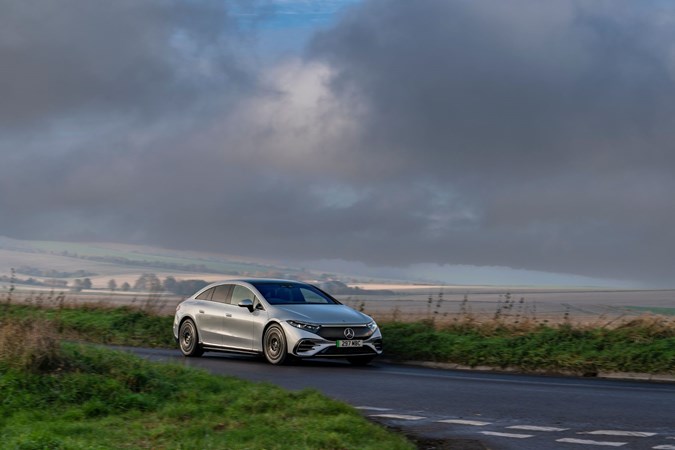
Can I share charge with other EVs to extend their range?
Only a few electric vehicles currently offer Vehicle to Load (V2L) charging technology, whereby the car becomes a charging station. Models based on the Hyundai E-GMP platform including the IONIQ 5, the KIA EV6 and the Genesis GV60 all include V2L technology, meaning they could, in theory, get a stranded EV back on the road by sharing some charge.
However, this could take a significant amount of time via a three pin charger and would likely only provide a handful of miles back to the range.
What are the longest range electric cars?
We’ve compiled a full list of the electric cars with the longest ranges on Parkers, though there are a few which stand out.
The list is currently topped by the Mercedes-Benz EQS – a streamlined, all-electric S-Class alternative that boasts an impressive 453-mile range via a 107.8kWh battery pack and 333hp electric motor. However, since prices start from over £100,000, you may want to consider some cheaper options first.
The Tesla Model S starts from around £55,000 with a range of roughly 400 miles. The Mercedes EQE, a sort of younger sibling to the EQS yet still furnished with typical Mercedes interior refinement and comfort, offers 384 miles.
The longest-range electric family car is the Volkswagen ID.3 Tour, which thanks to its 77kWh battery pack can travel 340 miles on a full charge. If you want to spend less, the MG 4 Long Range will cover an official 281 miles. If you want something even smaller, you could opt for the Renault Zoe with its 239-mile range.
FAQs
Can charging habits affect my EV’s range over time?
Yes, frequently charging your EV to 100% or running it down to 0% can impact long-term battery health and efficiency. For everyday driving, it’s best to keep the charge around 80% and avoid letting it fully run out.
How long does it take to charge an EV to get the full range?
Charging times are very much dependant on the type of charger you use. A rapid charger (50 kW or higher) can top up a battery to 80% in about 30–60 minutes, while a home wall box might take 6–12 hours for a full charge.
Do electric cars lose range capacity over time?
Yes, EV batteries can experience gradual wear over time, which might lead to a small reduction in range. However, most modern EVs come equipped with advanced battery management systems to preserve performance, and many manufacturers back their batteries with warranties of 8 years or more.
Just so you know, we may receive a commission or other compensation from the links on this website - read why you should trust us.





